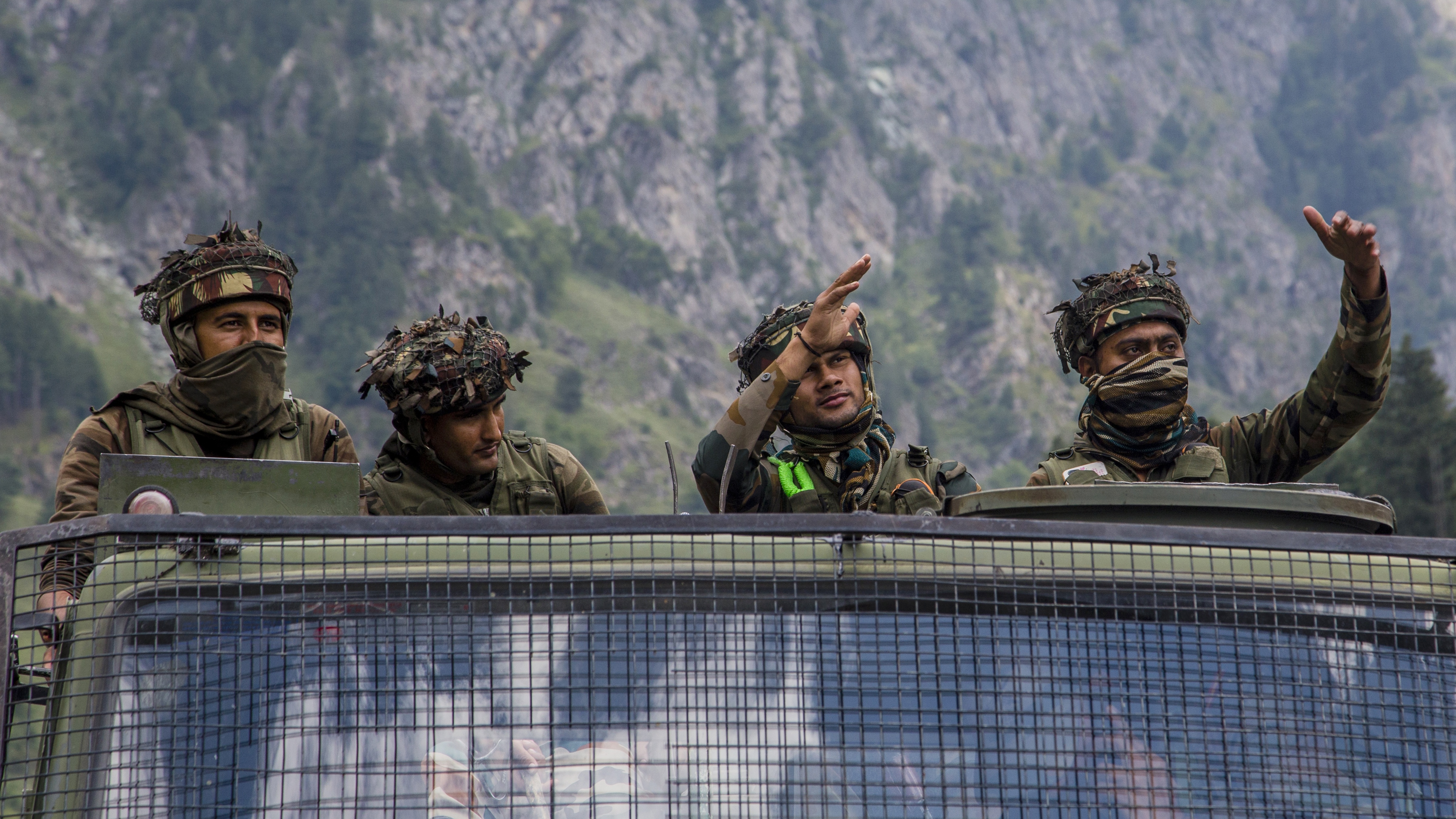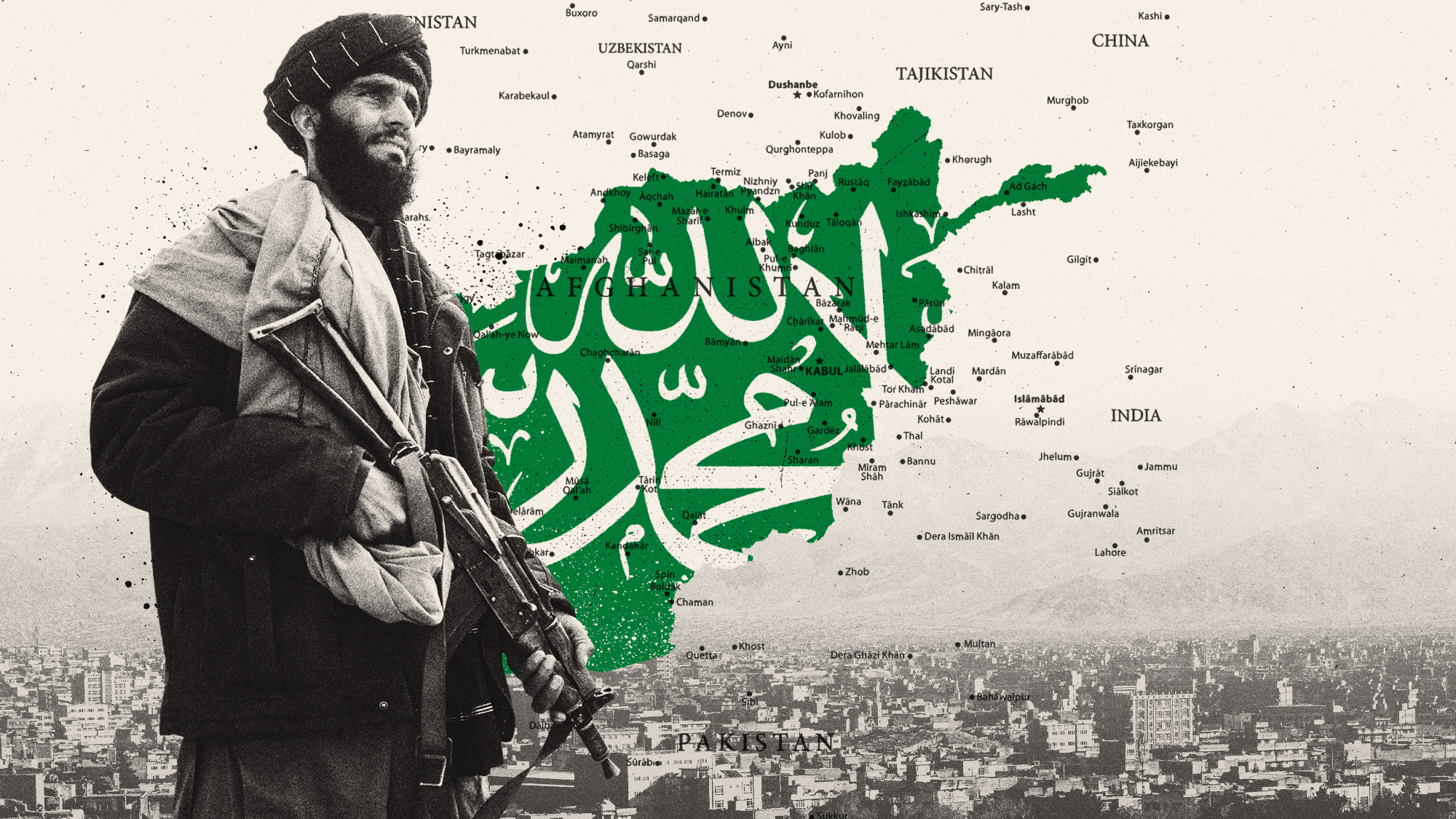China uses microwave weapons to blast Indian troops in disputed border region
The radiation technology left soldiers vomiting and incapacitated without breaking no-live-shots rule

China got round a no-live-shots agreement during a border stand-off in the Himalayas by deploying microwave weapons to “cook” enemy troops from India, a Beijing-based academic has claimed.
The Chinese military used “high-energy electromagnetic radiation” technology to effectively turn “two strategic hilltops that had been occupied by Indian soldiers into a microwave oven”, The Times reports.
The attack left the Indian troops “vomiting” and unable to stand within 15 minutes, enabling the People’s Liberation Army to “retake two strategically important hilltops in the Himalayas without any exchange of live fire”, according to Jin Canrong, a professor of international relations at China’s Renmin University.
The Week
Escape your echo chamber. Get the facts behind the news, plus analysis from multiple perspectives.

Sign up for The Week's Free Newsletters
From our morning news briefing to a weekly Good News Newsletter, get the best of The Week delivered directly to your inbox.
From our morning news briefing to a weekly Good News Newsletter, get the best of The Week delivered directly to your inbox.
The acadamic told attendees at a recent lecture that China didn’t publicise the victory, in late August, “because we solved the problem beautifully”.
“They [India] didn’t publicise it, either, because they lost so miserably,” he added.
The two sides have been locked in a border dispute in the Ladakh region since April, but have agreed a no-live-shots rule in a bid to avoid a repeat of the bloody 1962 Sino-Indian War.
However, troops from both sides have been killed during increasingly violent hand-to-hand combat, including a clash in June that saw the soldiers battering each other with iron sticks, bats and bamboo sticks studded with nails.
A free daily email with the biggest news stories of the day – and the best features from TheWeek.com
But now China appears to be using more sophisticated weapons, amid an ongoing failure to reach a settlement over the disputed region “despite a series of high-level talks”, says The Sun.
Microwave attacks use “beams of high-frequency electromagnetic radiation to heat the water in a human target’s skin, causing pain and discomfort”, the paper explains. “The weapons are not intended to do any lasting harm, though concerns have been raised about whether they could damage the eyes or have a carcinogenic impact in the long-term.”
The Times says that the US “deployed its own vehicle-mounted microwave weapon, called an Active Denial System, to Afghanistan ten years ago but it was withdrawn, reportedly without being used in combat”.
Similar weapons are suspected to have been used during an attack on US diplomats in the southern Chinese city of Guangzhou in 2018, and during alleged attacks against the US and Canadian embassies in Cuba’s capital Havana dating back to 2016.
Joe Evans is the world news editor at TheWeek.co.uk. He joined the team in 2019 and held roles including deputy news editor and acting news editor before moving into his current position in early 2021. He is a regular panellist on The Week Unwrapped podcast, discussing politics and foreign affairs.
Before joining The Week, he worked as a freelance journalist covering the UK and Ireland for German newspapers and magazines. A series of features on Brexit and the Irish border got him nominated for the Hostwriter Prize in 2019. Prior to settling down in London, he lived and worked in Cambodia, where he ran communications for a non-governmental organisation and worked as a journalist covering Southeast Asia. He has a master’s degree in journalism from City, University of London, and before that studied English Literature at the University of Manchester.
-
 US citizens are carrying passports amid ICE fears
US citizens are carrying passports amid ICE fearsThe Explainer ‘You do what you have to do to avoid problems,’ one person told The Guardian
-
 All roads to Ukraine-Russia peace run through Donetsk
All roads to Ukraine-Russia peace run through DonetskIN THE SPOTLIGHT Volodymyr Zelenskyy is floating a major concession on one of the thorniest issues in the complex negotiations between Ukraine and Russia
-
 Why is Trump killing off clean energy?
Why is Trump killing off clean energy?Today's Big Question The president halts offshore wind farm construction
-
 How Bulgaria’s government fell amid mass protests
How Bulgaria’s government fell amid mass protestsThe Explainer The country’s prime minister resigned as part of the fallout
-
 Normalising relations with the Taliban in Afghanistan
Normalising relations with the Taliban in AfghanistanThe Explainer The regime is coming in from the diplomatic cold, as countries lose hope of armed opposition and seek cooperation on counterterrorism, counter-narcotics and deportation of immigrants
-
 Pakistan: Trump’s ‘favourite field marshal’ takes charge
Pakistan: Trump’s ‘favourite field marshal’ takes chargeIn the Spotlight Asim Munir’s control over all three branches of Pakistan’s military gives him ‘sweeping powers’ – and almost unlimited freedom to use them
-
 Femicide: Italy’s newest crime
Femicide: Italy’s newest crimeThe Explainer Landmark law to criminalise murder of a woman as an ‘act of hatred’ or ‘subjugation’ but critics say Italy is still deeply patriarchal
-
 Brazil’s Bolsonaro behind bars after appeals run out
Brazil’s Bolsonaro behind bars after appeals run outSpeed Read He will serve 27 years in prison
-
 Americans traveling abroad face renewed criticism in the Trump era
Americans traveling abroad face renewed criticism in the Trump eraThe Explainer Some of Trump’s behavior has Americans being questioned
-
 Nigeria confused by Trump invasion threat
Nigeria confused by Trump invasion threatSpeed Read Trump has claimed the country is persecuting Christians
-
 Sanae Takaichi: Japan’s Iron Lady set to be the country’s first woman prime minister
Sanae Takaichi: Japan’s Iron Lady set to be the country’s first woman prime ministerIn the Spotlight Takaichi is a member of Japan’s conservative, nationalist Liberal Democratic Party